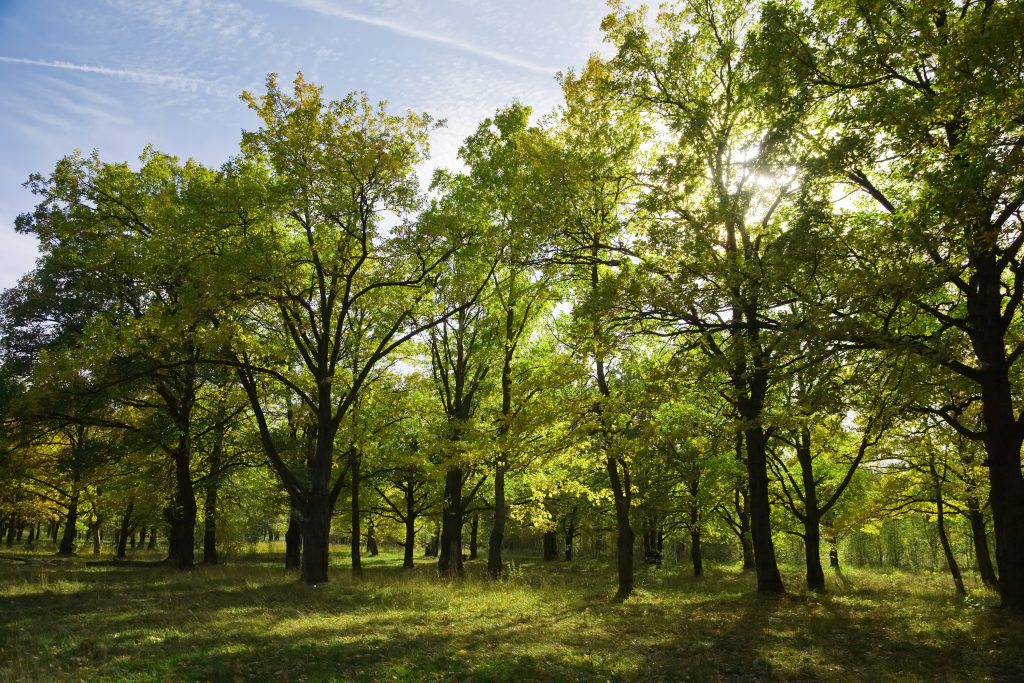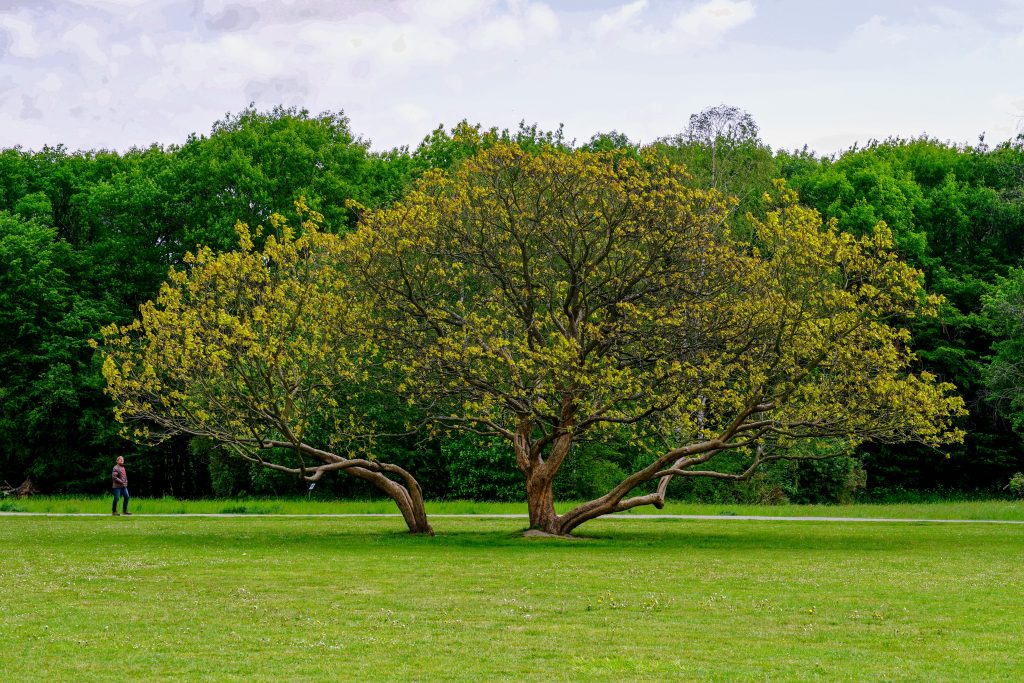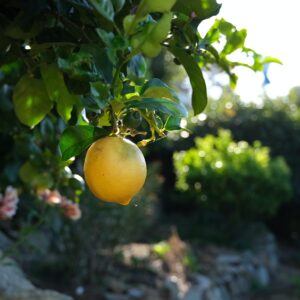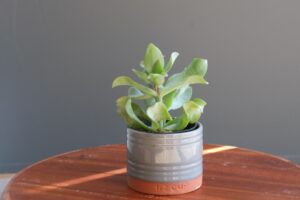THE PROS AND CONS OF USING SOIL AMENDMENTS FOR TREE HEALTH
THE PROS AND CONS OF USING SOIL AMENDMENTS FOR TREE HEALTH
The concept of soil amendments for tree health involves the practice of improving the quality and condition of the soil in which trees are planted or growing. Soil amendments are materials added to the soil to enhance its physical, chemical, or biological properties, ultimately promoting healthier and more robust tree growth. This practice is widely used in arboriculture and landscaping to address specific soil deficiencies or to create an optimal environment for tree root development and nutrient uptake.

Here are key aspects of the concept of soil amendments for tree health:
- Soil Enhancement: Soil amendments are employed to enhance the overall quality of the soil. This can involve improving nutrient levels, adjusting pH, enhancing soil structure, and increasing organic matter content.
- Nutrient Optimization: In some cases, the native soil may lack essential nutrients necessary for tree growth. Soil amendments can provide these nutrients or make them more accessible to tree roots, ensuring proper nutrition.
- pH Adjustment: Soil pH, which measures the acidity or alkalinity of the soil, plays a crucial role in nutrient availability. Amendments can help adjust pH levels to create a more suitable environment for tree root health.
- Soil Structure Improvement: Proper soil structure is vital for root growth, water infiltration, and aeration. Soil amendments can improve soil structure by reducing compaction and increasing porosity.
- Organic Matter Addition: Organic matter in the form of compost, mulch, or other amendments can enhance soil fertility and promote beneficial microbial activity in the root zone.
- Tailored Solutions: The choice of soil amendments depends on the specific needs of the tree species, the existing soil conditions, and the intended goals of the soil improvement efforts. Different trees may require different amendments.
- Professional Guidance: Soil amendment practices should ideally be carried out with guidance from certified arborists, horticulturists, or soil experts. These professionals can assess soil conditions, recommend appropriate amendments, and ensure proper application techniques.
- Environmental Considerations: It’s essential to consider the environmental impact of soil amendments. Care should be taken to choose environmentally friendly materials and application methods to minimize runoff and pollution.
In summary, soil amendments for tree health aim to create an optimal soil environment that supports healthy root development, nutrient uptake, and overall tree vitality. By addressing soil deficiencies and improving soil quality, these practices contribute to the long-term health and well-being of trees in urban and natural landscapes.
Importance of Soil Quality in Maintaining Healthy Trees
Soil quality is of paramount importance in maintaining healthy trees. It plays a foundational role in the overall well-being and vitality of trees, impacting their growth, development, and long-term survival. Here’s an explanation of the significance of soil quality for healthy trees:
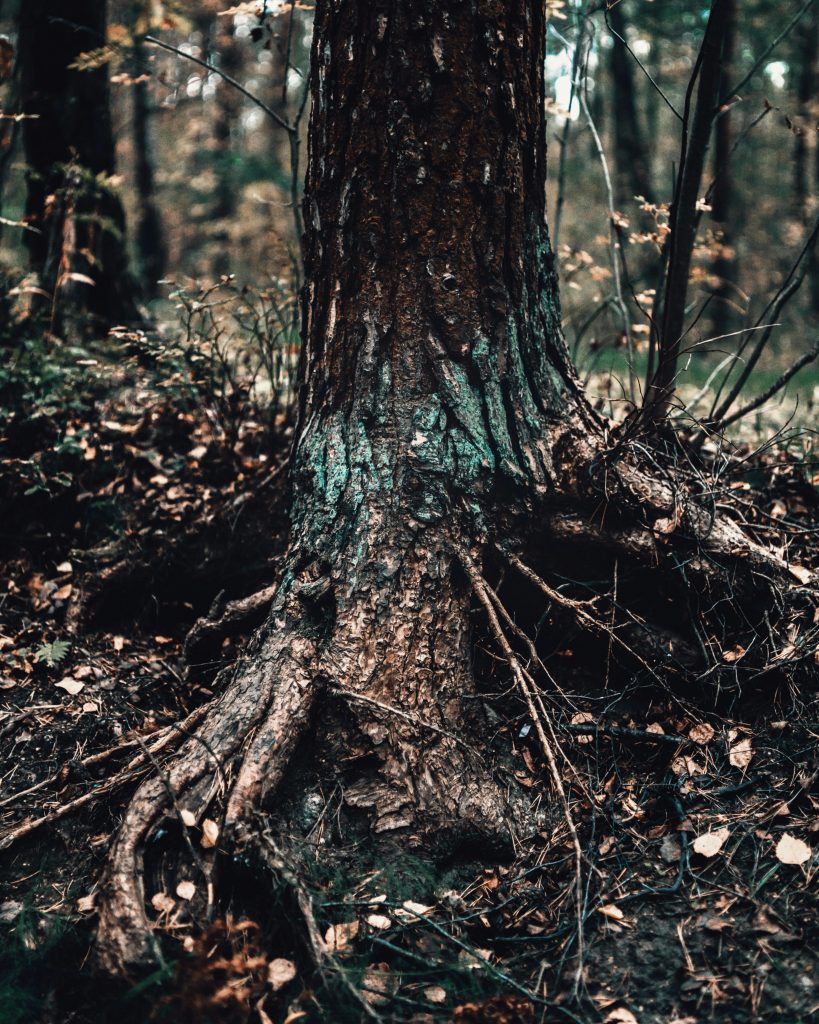
- Nutrient Availability:
- Soil serves as the primary source of essential nutrients that trees need for growth, including nitrogen, phosphorus, potassium, and micronutrients. Nutrient availability in the soil directly affects a tree’s ability to thrive and produce leaves, flowers, and fruit.
- Poor soil quality can result in nutrient deficiencies, leading to stunted growth, yellowing leaves, and reduced vigor.
- Water Retention and Drainage:
- Soil quality influences water retention and drainage. Well-structured soil retains moisture while allowing excess water to drain away. This balance is crucial because both waterlogged and overly dry soils can harm trees.
- Proper water availability ensures that trees receive adequate hydration, which is essential for their physiological processes.
- Root Health and Development:
- Healthy soil supports robust root systems. Tree roots need oxygen, nutrients, and sufficient space to grow and spread.
- Compacted or poor-quality soil restricts root growth and can lead to shallow root systems that are susceptible to damage and disease.
- pH Balance:
- Soil pH, which measures its acidity or alkalinity, affects nutrient availability. Different tree species have specific pH preferences for optimal nutrient uptake.
- Soil pH that falls outside a tree’s preferred range can result in nutrient deficiencies, even if nutrients are present in the soil.
- Microbial Activity:
- Soil quality influences the activity of beneficial microorganisms that contribute to nutrient cycling and organic matter decomposition.
- Healthy soil ecosystems enhance nutrient availability and promote tree health by breaking down organic matter and making nutrients accessible to tree roots.
- Disease Resistance:
- Well-structured, healthy soil can help trees resist soil-borne diseases and pests. Soil-borne pathogens are less likely to thrive in soil with a balanced microbial community and proper drainage.
- Compromised soil quality can increase a tree’s susceptibility to diseases and infestations.
- Long-Term Resilience:
- Trees in soils of good quality are more resilient to environmental stressors, such as drought, extreme temperatures, and pollution.
- Healthy soil helps trees establish deep root systems that can access water and nutrients even during adverse conditions.
- Overall Tree Vitality:
- Collectively, soil quality impacts overall tree vitality, appearance, and longevity. Healthy trees are more attractive, contribute to a desirable environment, and provide numerous ecological and aesthetic benefits.
In conclusion, soil quality is the foundation upon which healthy trees depend. Proper soil management, including soil testing, amendment, and maintenance, is essential to ensure that trees receive the necessary nutrients, water, and support for robust growth and long-term survival. Trees and their surrounding soil form a symbiotic relationship, and investing in soil quality is a key aspect of tree care and preservation.
Pros of Using Soil Amendments
Using soil amendments offers numerous advantages for improving soil quality and supporting plant growth, including healthier and more robust trees. Here are some of the key pros of using soil amendments:
- Enhanced Nutrient Availability:
- Soil amendments can provide essential nutrients like nitrogen, phosphorus, and potassium, which are vital for plant growth. These nutrients may be lacking in native soils, and amendments can replenish them.
- Improved Soil Structure:
- Amendments can enhance soil structure by improving aeration, reducing compaction, and increasing porosity. This results in better root growth, water infiltration, and root access to nutrients.
- pH Adjustment:
- Soil amendments can be used to adjust soil pH to a range that is optimal for plant growth. This is crucial because soil pH can impact nutrient availability, and different plants have varying pH preferences.
- Organic Matter Enrichment:
- Adding organic matter through amendments like compost or organic mulch increases soil fertility and promotes beneficial microbial activity. This improves nutrient cycling and overall soil health.
- Disease Suppression:
- Some soil amendments can suppress soil-borne diseases and pests, reducing the risk of plant infections and damage.
- Erosion Control:
- Soil amendments like mulch and cover crops can help control erosion by stabilizing soil and preventing it from washing away during heavy rains.
- Water Retention:
- Soil amendments can enhance water retention in sandy soils, reducing the need for frequent irrigation. In contrast, they can improve drainage in clay soils, preventing waterlogged conditions.
- Reduced Soil Compaction:
- Amendments can mitigate soil compaction caused by heavy foot traffic or machinery. This allows for better root penetration and oxygen exchange.
- Increased Microbial Activity:
- Organic amendments encourage the growth of beneficial soil microorganisms, enhancing nutrient cycling and decomposition of organic matter.
- Sustainable Soil Management: – Soil amendments promote sustainable soil management practices by improving soil health, reducing the need for chemical fertilizers, and enhancing plant resilience.
- Customization: – Soil amendments can be tailored to specific plant or tree needs, addressing deficiencies or imbalances in the soil. This customization ensures that the soil is optimized for the intended plantings.
- Long-Term Benefits: – Many amendments provide long-lasting benefits to the soil, continuing to improve its quality and fertility over time.
- Environmental Benefits: – Properly amended soils can reduce nutrient runoff and pollution, benefiting the environment by protecting water quality.
- Economic Benefits: – Improved soil quality can lead to healthier, more productive plants, potentially increasing crop yields, and reducing maintenance costs in landscaping and agriculture.
In summary, soil amendments offer a range of benefits for optimizing soil quality and supporting healthy plant growth, including trees. They can address nutrient deficiencies, improve soil structure, promote beneficial soil microorganisms, and enhance overall soil health, leading to healthier and more resilient trees and landscapes.
Cons of Using Soil Amendments
While soil amendments offer several advantages, they also come with certain drawbacks and potential challenges. It’s essential to consider these cons before deciding to use soil amendments for landscaping or tree care. Here are some of the common disadvantages associated with using soil amendments:
- Cost:
- Soil amendments, especially high-quality organic materials, can be expensive to purchase and apply. The initial investment in amendments may deter some property owners or landscapers.
- Labor-Intensive:
- Applying soil amendments can be labor-intensive, particularly for large areas. It may require significant effort and time to distribute and incorporate amendments into the soil effectively.
- Risk of Over-Amendment:
- Over-amending soil can lead to nutrient imbalances, which can harm plant health. It’s essential to carefully calculate and measure amendments to avoid excesses.
- Compatibility with Native Soil:
- Soil amendments may not always integrate well with the native soil. In some cases, they may create distinct layers or barriers that hinder root penetration and water movement.
- Short-Term Effects:
- The benefits of soil amendments can be short-lived. Over time, especially in highly active soils, the added nutrients and organic matter may be depleted, requiring regular reapplication.
- Environmental Concerns:
- Some soil amendments, if not applied and managed correctly, can pose environmental concerns. For example, excessive runoff of certain nutrients from amended soils can contribute to water pollution.
- Potential for Nutrient Imbalances:
- Depending on the type and amount of amendments used, there is a risk of nutrient imbalances in the soil, leading to deficiencies or toxicities in plants.
- Inconsistent Results:
- The effectiveness of soil amendments can vary depending on soil type, climate, and other factors. In some cases, the results may not meet expectations.
- Soil Testing Required:
- To determine the appropriate amendments and quantities needed, soil testing is often necessary. This adds an additional step and cost to the soil improvement process.
- Long-Term Maintenance: – Using soil amendments may necessitate ongoing maintenance and reapplication to sustain soil quality, which can be time-consuming and costly.
- Soil Microbial Imbalance: – Some amendments can disrupt the balance of beneficial soil microorganisms, potentially affecting soil health and nutrient cycling.
- Potential for Weed Seeds: – Organic amendments, such as compost, may contain weed seeds. If not properly composted, amendments can introduce weed problems into the landscape.
- Limited Amendment Options: – In some cases, finding the right soil amendments that are suitable for specific soil conditions or plant requirements can be challenging.
- Incompatibility with Plant Species: – Not all plants or tree species may benefit equally from certain soil amendments. Some trees have specific soil preferences that may not align with the chosen amendments.
In conclusion, while soil amendments offer various benefits for improving soil quality and plant health, they are not without potential drawbacks. It’s essential to carefully assess the specific needs of your soil and plants, as well as consider the long-term implications and costs of using amendments. Consulting with soil experts or arborists can help make informed decisions regarding soil improvement practices.
About Murray, Utah
Murray is a city situated on the Wasatch Front in the core of Salt Lake Valley in the U.S. state of Utah. Named for territorial governor Eli Murray, it is the state's fourteenth largest city. According to the 2020 census, Murray had a population of 50,637. Murray shares borders with Taylorsville, Holladay, South Salt Lake and West Jordan, Utah. Once teeming with heavy industry, Murray's industrial sector now has little trace and has been replaced by major mercantile sectors. Known for its central location in Salt Lake County, Murray has been called the Hub of Salt Lake County. Unlike most of its neighboring communities, Murray operates its own police, fire, power, water, library, and parks and recreation departments and has its own school district. While maintaining many of its own services, Murray has one of the lowest city tax rates in the state.
Neighborhoods in Murray, Utah
Murray Oakes, Grant Park, Southwood Park, Murray Park, Murray Park Restrooms, Willow Pond Park, Neighborhood Veterinary Care
Things To Do in Murray, Utah
Bus Stops in Murray, Utah to Truco Services, Inc.
Bus Stop in Murray Central Station (Bay C) Murray, Utah to Truco Services, Inc.
Bus Stop in State St @ 4801 S Murray, Utah to Truco Services, Inc.
Bus Stop in Murray North Station Murray, Utah to Truco Services, Inc.
Bus Stop in State St @ 4949 S Murray, Utah to Truco Services, Inc.
Bus Stop in Murray Central Frontrunner/Trax Station Murray, Utah to Truco Services, Inc.
Bus Stop in Murray Blvd / Vine St (SB) Murray, Utah to Truco Services, Inc.
Bus Stop in State St @ 3925 S Murray, Utah to Truco Services, Inc.
Bus Stop in State St @ 4824 S Murray, Utah to Truco Services, Inc.
Bus Stop in State St @ 5223 S Murray, Utah to Truco Services, Inc.
Bus Stop in Murray Blvd / Allendale Dr (NB) Murray, Utah to Truco Services, Inc.
Bus Stop in Murray Blvd @ 5039 S Murray, Utah to Truco Services, Inc.
Bus Stop in State St @ 4721 S Murray, Utah to Truco Services, Inc.
Driving Directions in Murray, Utah to Truco Services, Inc.
Driving Directions from Woodruff Tree Trimming and Removal to 4640 Commerce Dr, Murray, UT 84107, USA
Driving Directions from Reliable Tree Care to 4640 Commerce Dr, Murray, UT 84107, USA
Driving Directions from Tree Pro-Tech to 4640 Commerce Dr, Murray, UT 84107, USA
Driving Directions from Prestige Tree And Landscape to 4640 Commerce Dr, Murray, UT 84107, USA
Driving Directions from Excellence Tree & Landscape to 4640 Commerce Dr, Murray, UT 84107, USA
Driving Directions from Amen Trees to 4640 Commerce Dr, Murray, UT 84107, USA
Driving Directions from Tim's Tree Care to 4640 Commerce Dr, Murray, UT 84107, USA
Driving Directions from Jordan Tree Service - Murray to 4640 Commerce Dr, Murray, UT 84107, USA
Driving Directions from Arbor Works to 4640 Commerce Dr, Murray, UT 84107, USA
Driving Directions from Diamond Tree Experts to 4640 Commerce Dr, Murray, UT 84107, USA
Driving Directions from Green Tree Arborist to 4640 Commerce Dr, Murray, UT 84107, USA
Driving Directions from TruCo Services to 4640 Commerce Dr, Murray, UT 84107, USA
Reviews for Truco Services, Inc. Murray, Utah
Emily Abercrombie
We had a great experience with TruCo! They were well priced, responsive and prompt. Michael was a pleasure to work with and gave us advice on which plants to put in where we took out our ugly old shrubs. I would highly recommend this company!!!
Michelle Turpin
TruCo Services gets 5 stars from us for customer service. We experienced a few issues with their services this last year and Rob Eccles in senior management, stepped in and immediately handled our issues. He was very committed to making sure they understood our expectations and would execute to make us happy.
Siobhan Billingsley
I work for a property management company and have the pleasure of working with Rob at a community in Sandy. He has been incredible to work with and always responds in a timely manner. He knows all the homeowners by name and address and is aware of all the "problem" areas when it comes to sprinklers. I never have to worry about following up with him because he always reaches out to provide me with an update. If you're looking to work with someone who takes pride in their job, is professional, and can solve the worst landscaping problems thrown your way, Rob is your guy. Thank you, Rob for all you do!
Jaime S.
We have used Truco at 2 of the complexes we manage, they have been great to work with. Good quality service, outstanding customer service with good communication. That's hard to find these days. I highly recommend them. Travis has been awesome to work with.
Jerusha Smart
We use TruCo for a majority of our properties and our home. While other landscaping companies we use come and go for various reasons like cost, communication issues, work performance, etc., TruCo is always consistent in price and work. Also, Rob is the best.
